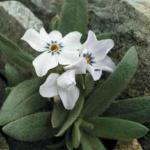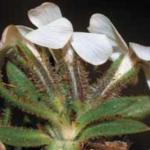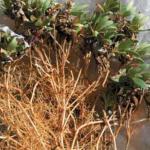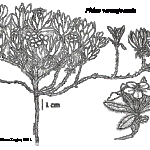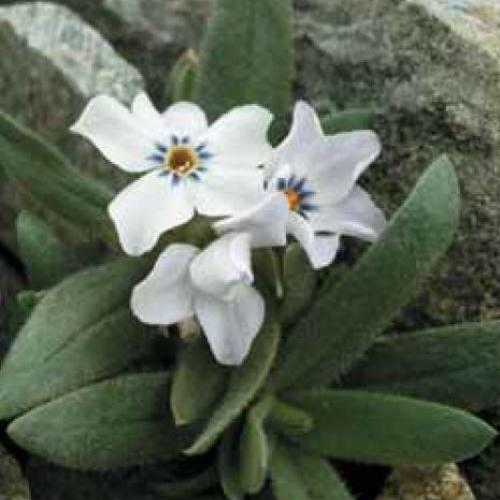Phlox vermejoensis (Vermejo Phlox)
Family
POLEMONIACEAE
Synonyms
NONE
Common Name
Vermejo Phlox
| USFWS | State of NM | USFS | BLM | Navajo Nation | State Rank | Global Rank | R-E-D Code | NMRPTC Status | Strategy Status |
|---|---|---|---|---|---|---|---|---|---|
| S1 | G1 | 3-1-3 | R | SS |
| Overall Conservation Status | Documented Threats | Actions Needed |
|---|---|---|
| WEAKLY CONSERVED | Climate change/drought |
Status surveys on abundance, distribution and threats |
Description
Perennial herb with numerous branched and tangled rhizomes from a central caudex; above-ground stems solitary or in clumps, arising from upturned rhizome tips, forming short, leafy tufts 1-4 cm tall; leaves opposite and sessile, spreading to ascending, blades elliptic, oblong, or oblanceolate, 6-25 mm long, 3-8 mm wide, the tips acute to obtuse, occasionally apiculate, surfaces and margins glabrous to moderately pubescent with gland-tipped hairs; inflorescence a terminal, reduced, leafy cyme with 1-4(-6) flowers; pedicels 1-4 mm long, densely pubescent with gland-tipped hairs; sepals 5, narrowly lanceolate to almost linear, 8-11 mm long, 0.4-0.7 mm wide, united for 4-5 mm at base, outer surface densely pubescent like the pedicels; corolla salverform, regular, white or rarely tinged with pink, often with purple "pinwheel" markings at throat, tube (7-)8-11 mm long, equaling the calyx, lobes 5, spreading, obovate, 6-9 mm long, 4.5-7.5 mm wide, entire; filaments unequally attached on upper half of corolla tube; anthers included or some slightly exserted, positioned above the style and stigmas; ovary superior, glabrous, with 3 carpels and 3 locules, each containing a single ovule; capsule 4.5-6.5 mm long, 2-3 mm wide, elliptic, tan, glabrous, hardened, with 3 valves; seeds light brown 3-3.6 mm long, 1-1.8 mm wide. Flowers in July.
Similar Species
Phlox pulvinata is the only other phlox in New Mexico that grows at elevations above 10,000 ft. It forms cushion-like clumps, but its leaves are linear and rigid with sharp-pointed tips.
Distribution
New Mexico: Taos County, Sangre de Cristo Mountains, vicinity of Big Costilla Peak.
Habitat
North-facing, stable, vegetated, alpine scree slopes of granite or metamorphic rock at 3,720-3,840 m (12,200-12,600 ft).
Remarks
This plant was discovered in 2008 by Ben Legler while doing botanical surveys of the Vermejo Park Ranch for his Master’s thesis at the University of Wyoming. The ranch is privately owned and seldom visited by botanists.
Conservation Considerations
There are no known, direct impacts from human activities. Climate change poses a possible long-term threat since the populations lie near ridge crests where upslope migration is limited (Legler 2011).
Important Literature
*Legler, B.S. 2011. Phlox vermejoensis (Polemoniaceae), a new species from northern New Mexico, U.S.A. Journal of the Botanical Research Institute of Texas 5(2):397-403.
Information Compiled By
Charlie McDonald 2012
For distribution maps and more information, visit Natural Heritage New Mexico

